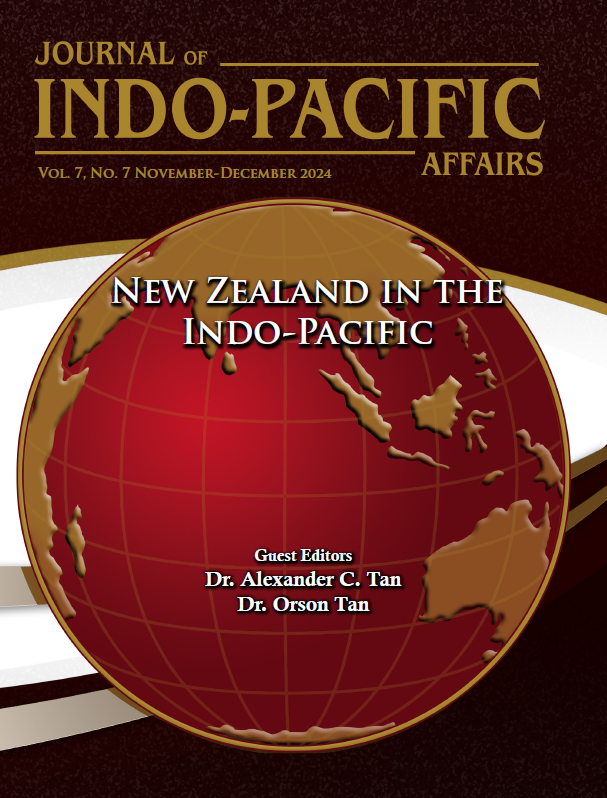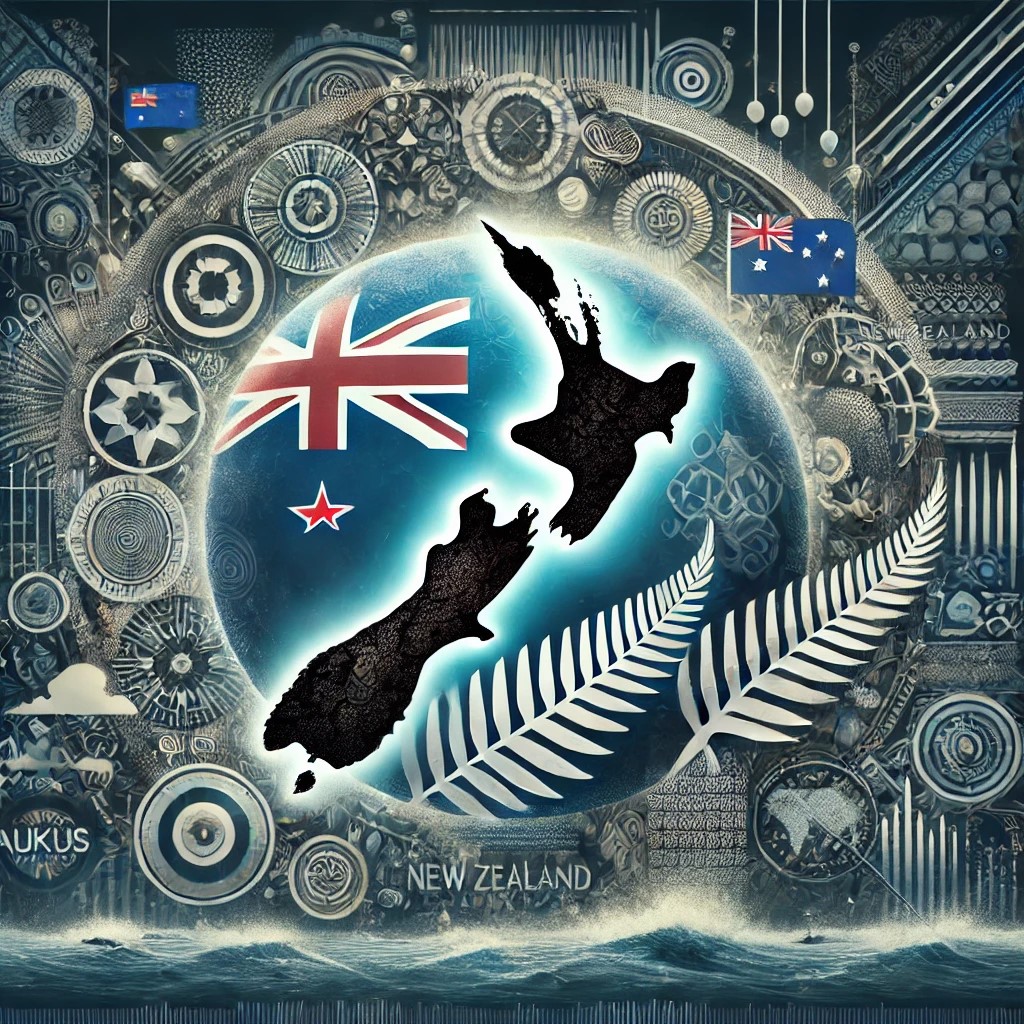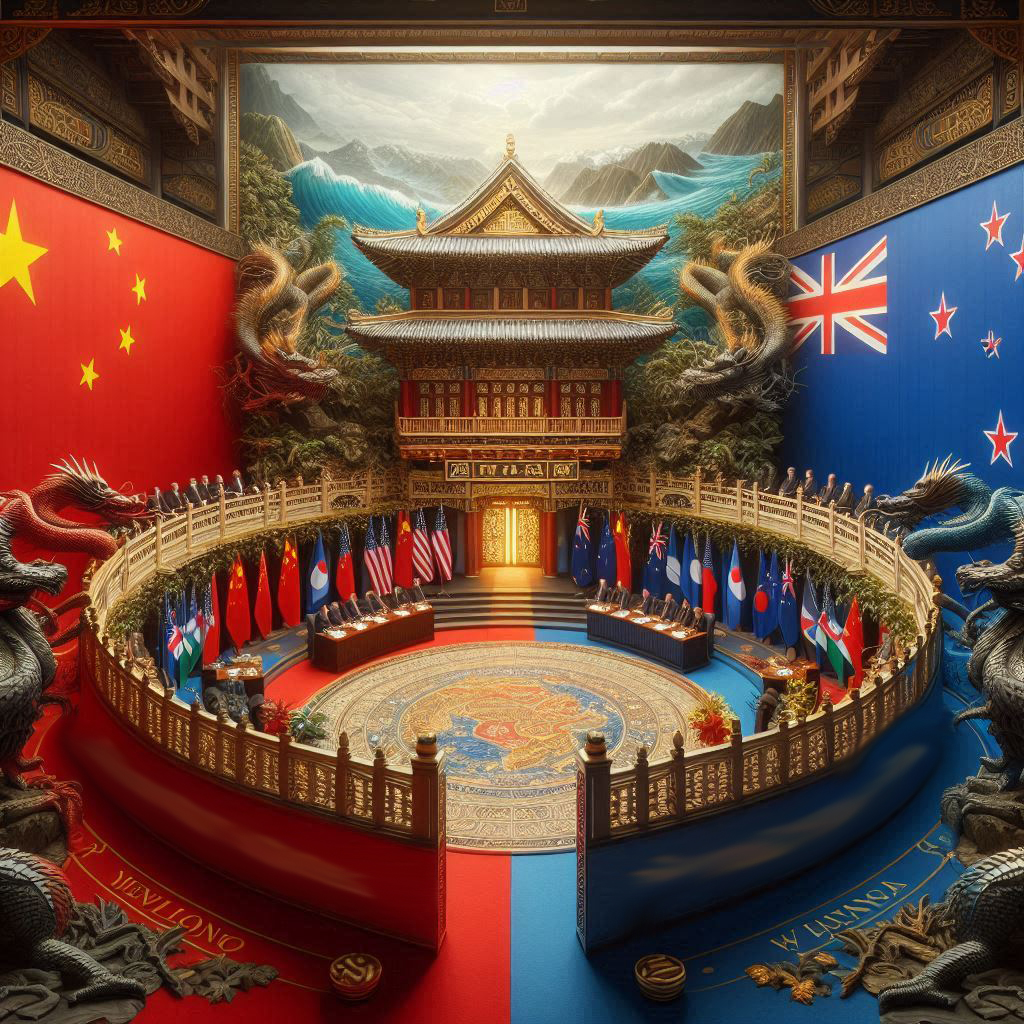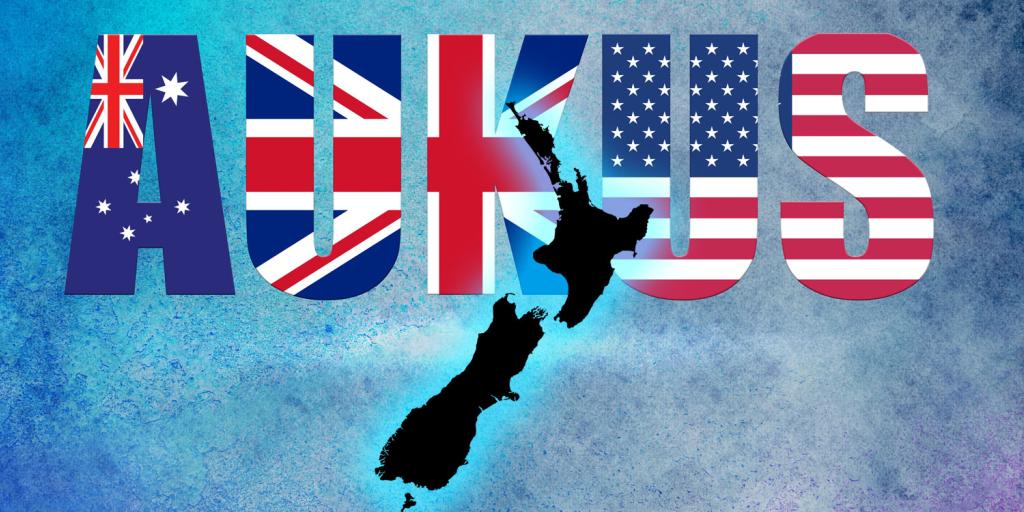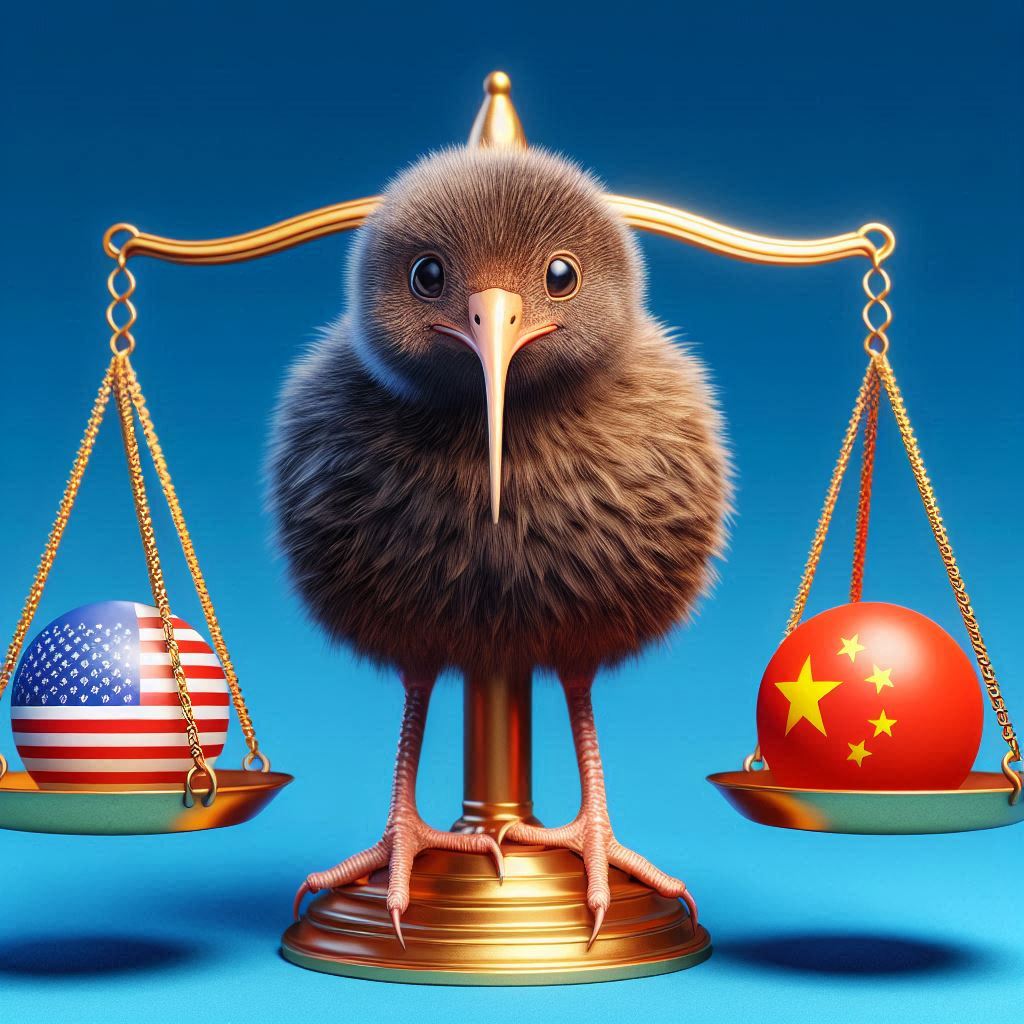Journal of Indo-Pacific Affairs, vol. 7, no. 7 (November-December 2024)
United States Air Force sent this bulletin at 11/20/2024 08:17 AM CSTJournal of Indo-Pacific Affairs
Vol. 7, No. 7 (November–December 2024): New Zealand in the Indo-Pacific
Volume 7, number 7 (November–December 2024) of the Journal of Indo-Pacific Affairs explores New Zealand’s evolving foreign policy amid shifting Indo-Pacific dynamics, US-China competition, and the strategic partnership of AUKUS. In collaboration with the Institute for Indo-Pacific Affairs (IIPA), an independent, nonpartisan research center based in Christchurch, the journal has chosen to illuminate this curious case, presenting a veritable smorgasbord of scholarly ruminations on Wellington’s precarious position betwixt the Scylla of Chinese economic enticement and the Charybdis of American strategic embrace. Our guest editors for this issue are IIPA’s very own Dr. Alexander C. Tan and Dr. Orson Tan.
|
New Zealand’s Diplomatic Tightrope: The Editors’ Note In the grand theater of geopolitics, where the titans of East and West engage in their sempiternal struggle for supremacy, we find ourselves drawn to an unlikely protagonist: New Zealand, that diminutive archipelago nestled in the vast expanse of the South Pacific. In collaboration with the Institute for Indo-Pacific Affairs (IIPA), an independent, nonpartisan research center based in Christchurch, the journal has chosen to illuminate this curious case, presenting a veritable smorgasbord of scholarly ruminations on Wellington’s precarious position betwixt the Scylla of Chinese economic enticement and the Charybdis of American strategic embrace. Our guest editors for this issue are IIPA’s very own Dr. Alexander C. Tan and Dr. Orson Tan. |
|
|
Title: “Strategically Secure but Economically Insecure”: Economic Security and New Zealand’s Grand Strategy Author(s): Dr. Alexander C. Tan & Neel Vanvari Abstract: In recent years, China has become New Zealand’s largest trading partner, while the United States and its allies, particularly Australia, remain its traditional security partners. Like other Indo-Pacific states, New Zealand has adopted an asymmetric hedging strategy to manage its relationships with the United States and China. As tensions between Wellington and Beijing, and Beijing and Washington intensify, there are calls for New Zealand to adopt a more active pro-US stance. This article examines the likelihood of New Zealand changing its hedging strategy. We assess the role economic security plays in Wellington’s calculus to determine if closer ties with the United States are feasible. We argue that, in the short term, Wellington is unlikely to abandon its hedging strategy due to high economic security costs. Finding alternative markets is difficult, due to international pessimism toward free trade and constraints within New Zealand’s domestic political economy, suggesting China will remain indispensable for New Zealand. |
|
|
Author(s): Dr. Juhn Chris P. Espia Abstract: This article examines how the New Zealand Defence Force (NZDF) builds and deploys its capabilities in the evolving Indo-Pacific strategic environment. Geography, domestic politics, and historical moments shape defense policy and spending. The NZDF continues traditional deployments—peacekeeping, logistics, maritime security, and humanitarian operations—aiming to maintain an independent foreign policy while contributing modestly to the international order. The NZDF plays a critical role in humanitarian assistance and disaster response (HADR) in the Pacific and Southeast Asia, areas where New Zealand enjoys goodwill. However, despite improved troop quality, New Zealand’s defense spending and personnel numbers have declined, eliminating its air combat capabilities. While HADR and other nontraditional roles grow, including search, rescue, and resource protection, the NZDF shifts away from its traditional role of border defense. Coupled with reluctance to formalize alliances beyond Australia, this approach in a riskier environment seems like a dangerous gamble. |
|
|
Author(s): Dr. Nicholas Khoo Abstract: The consensus within New Zealand that the country’s strategic environment has deteriorated over the last decade quickly breaks down on the question of how to respond to this development. It is in this context that the AUKUS technology partnership was introduced in 2021 by Australia, the United Kingdom, and the United States. This article explores the major perspectives in the discourse on New Zealand’s possible participation in the Pillar II component of AUKUS. These are categorized under the rubric of “AUKUS critics” and “AUKUS advocates.” The critics’ views are critically evaluated and the merits of the alternative AUKUS advocates’ perspective discussed as a more compelling alternative. |
|
|
Title: Hurting, Not Helping: New Zealand’s Values-based Foreign Policy and Its ASEAN Relationship Author(s): Dr. Orson Tan Abstract: In pursuit of its “independent” foreign policy, New Zealand often likes to harp on the fact that the guiding principle to its interaction with the world is rooted in the liberal values that it believes in, resulting in a “values-based” foreign policy that is less pragmatic and more normative idealistic. Under the Ardern government, New Zealand had often highlighted its commitment to this values-based approach, with then-Foreign Minister Nanaia Mahuta having spoken of an indigenous foreign policy guided by Māori principles to underpin New Zealand’s commitment to the liberal values. The importance of values to New Zealand was signaled most strongly in the US-Aotearoa New Zealand Joint Statement released in 2022 where Ardern reaffirmed New Zealand’s commitment to defending the international rules-based order and the liberal values that underpin it. Yet as the geopolitical environment continues to evolve under the tension of great power strategic competition, New Zealand has found itself having to acknowledge a new security environment, one in which it is required to actively seek out partnerships to balance its worries. It is in this situation that New Zealand’s values-based approach is proving to be an obstacle to the addressing its security concerns, especially in the Southeast Asian region that is its closest neighbor. This article aims to examine why New Zealand’s traditional focus on values has fallen on deaf ears in Southeast Asia and what it can do to address its partnerships in this crucial region. |
|
|
Author(s): Dr. Nicholas Ross Smith Abstract: Since the late 2000s, New Zealand has largely followed an asymmetrical hedging strategy in its foreign policy: growing its trade relationship with China while concurrently remaining firmly within the US-led security architecture. However, as the room for hedging in the Indo-Pacific has shrunk, especially after Wellington adopted an Indo-Pacific outlook in 2019, New Zealand has taken steps to lessen its trade reliance on China while further committing itself within the Anglosphere. Since the election of the Sixth National Government of New Zealand in late 2023, Wellington appears to be tentatively switching from a strategy of hedging to something closer to a more conventional balancing strategy, evident in its efforts to participate in AUKUS. While the current situation can still be characterized as an asymmetrical hedge given the ongoing importance of China, if the room for hedging continues to shrink, it is likely that New Zealand will completely abandon its hedge in the future. |
|
|
Coming soon: |
|
|
|
Kenney Paper No. 9 Title: Subregionalism, the Pacific Islands Forum, and Regional Security Author: Marilyn Moira Logovaka Simmons Abstract: Pacific subregionalism is exemplified by the establishment of three geocultural subregional groups within the design of the Pacific Islands Forum (PIF). To examine the complex dynamics of Pacific subregionalism and its implications on regional security, this paper identifies three concepts—cultural ties, geoeconomics, and the perceived failure of regionalism—as significant factors leading to the formation of the Melanesian Spearhead Group, the Micronesian Presidents’ Summit, and the Polynesian Leaders Group. Understanding the interests of these subregional groups is critical to strengthening the position of the PIF as a regional bloc to address external strategic and geopolitical influences. A strong PIF means that the region has a secure negotiating bloc in global politics to address the region’s most pressing concern: climate change. Uniting these subgroups involves understanding the differences and diversity that exists within the values and interests that these groups represent. The PIF’s conciliatory process to addressing regional concerns is not always a guarantee. The stability within its membership involves these groups putting internal interests first before external ones. Therefore, a united front on regionalism and subregionalism acts as a catalyst for the successful implementation of the 2050 Strategy for the Blue Pacific Continent—the Pacific’s newest pathway to achieve regional security. |

